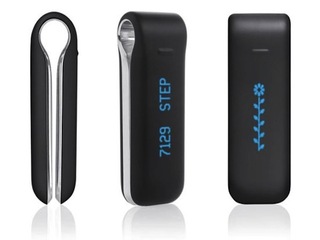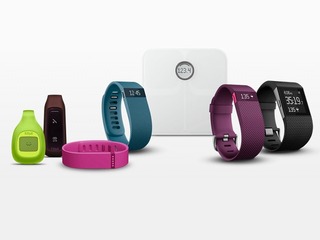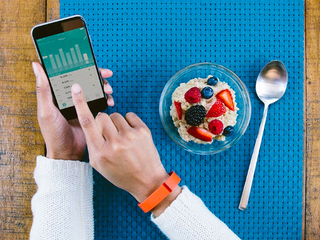When BetterHelp was young: the early years
BetterHelp and Vator have teamed up for Becoming Us, a virtual group therapy program
Read more...
As our readers know, Vator has started a series called: When they were young.
It's a look back at the modest days of startups, how they evolved in their first few years, and what traction they had at the time. In the end, we hope to have a good glimpse into what great startups looked like in their first few years.
Stories like these are always well received, because it reminds us that anyone, regardless of pedigree and environment, can rise above the noise and have great influence. They show us the value of being resilient, persistent and committed. If we can follow their footsteps, maybe we too can have similar success.
Today's segment is on Fitbit.
------ Fitbit's First Year ------
Founded: April 2007
Founders (age at the time): James Park (30), CEO; Eric Friedman (30), CTO
Initial company description: The idea for Fitbit was inspired by the launch of the Nintendo Wii, which came out in November 2006.
"Our inspiration was the Nintendo Wii. In late 2006, I waited at Best Buy at 6 a.m. to get one. I was amazed by the way Nintendo had combined the hardware and the sensors with amazing software to create this holistic experience that made gaming into something that was active, fun, and positive," Park later says.
"We started Fitbit in early 2007, just months after the original Wii experience. The mission has been the same since then--how do we use technology to help people get healthier and more active, specifically by giving them data and guidance and inspiration?"
------ Fitbit's Second Year ------
Product, at one year and five months from founding: In September 2008, the company unveils its first product, the Fitbit Tracker, at the TechCrunch50 conference. The company comes in second place, losing to Yammer. Other finalists that year included Dropbox and TrueCar.

"We want to make people aware of how active they are, how well they're eating, and really motivate them to live a healthier life. The device itself, inside there's an accelerometer, like in a Nintendo Wii, and it constantly senses your body's motion and tells you things like: how intense, or how long have I been active? How many calories have I burned? Did I sleep well? How many steps have I taken? Distance traveled?" Park says in an interview at the conference, explaining how the device worked at the time.
"All this data is collected on the device. It's wireless, so, anytime you walk by the base station, the data is automatically uploaded. There's a website where you can see all this data in more detail."
Traction, at one year and five months from founding: On the day of the company's TechCrunch 50 presentation, it gets 2,000 pre-orders for its upcoming product.
First funding, at one year and six months from founding: In October 2008, Fitbit raises $2 million in Series A funding from True Ventures and SoftTech VC.
Product, at one year and eight months from founding: In December 2008, the first production prototypes for the Fitbit are created in Singapore.

------ Fitbit's Third Year ------
Launch, at two years and five months from founding: Despite initially saying that it would be available to the public in December of 2008, or January 2009 it takes Fitbit nearly another year to get its first product on the market.
The Fitbit tracker starts shipping in September 2009. It costs $99 and tracks steps, distance, calories burned, and sleep. Fitbit also introduces its online dashboard which could be synced to the Fitbit tracker.

Product, at two years and eight months from founding, three months from launch: In December of 2009, Fitbit introduces social features on its online dashboard, including friends and leaderboards.
Traction, at two years and eight months from founding, three months from launch: In 2009, Fitbit sells 5.5 thousand devices.
------ Fitbit's Fourth Year ------
Product, at two years and two months from founding, eight months from launch: In June 2010, Fitbit begins selling premium services through its online dashboard with a virtual trainer and additional analytics.
Second funding, at three years and five months from founding, one year from launch: In September 2010, Fitbit raises a $9 million Series B round, led by Foundry Group. Foundry's Brad Feld joins the company's Board of Directors.
"Over the past few years, there have been a steady stream of new computer-connected products that measure various human activities. Many of these, such as glucose monitors, came from the medical device arena. Others were sports-oriented, such as heart rate and GPS distance monitors. These devices were interesting, but addressed a very specific set of human activities and measurements," Feld writes in a blog post.
"As we studied the area of human computer interaction, we developed a belief that in the future humans will increasingly instrument and measure their activities. Over the past year, we bought numerous products in a search for the best company in a market – human instrumentation – that we believe will explode over the next decade. With Fitbit, we believe we have found it."
Traction, at three years and six months from founding, one year and one month from launch: In October 2010, Fitbit completes its first corporate wellness sale, which includes over 1,000 devices.
Revenue, at three years and eight months from founding, two years and three from launch: By the end of 2010, Fitbit has made $5 million in revenue from 100,000 devices sold that year.
------ Fitbit's Fifth Year ------
Second product, at four years and six months from founding, two years and one month from launch: In October 2011, the company begins selling its second product, the Fitbit Ultra, which introduces tracking for floors climbed, along with encouraging messages, the ability for users to add more personal touches to their Fitbit Ultra, as well as a clock and stopwatch.

"At the end of the day, it’s not about being filled with fancy gadgets just because they’re new. It’s about providing you with easy to use, fun, effective tools to directly fit your needs and provide you with motivation to keep going — whether you’re taking a walk rather than driving, taking the stairs rather than the elevator, or just getting out and moving. It’s about reaching your goals in the most efficient and fun way possible. And it’s about becoming as healthy as you want to be," Fitbit writes.
The company also releases a native iOS mobile app.
Expansion, at four years and eight months from founding, three years and three months from launch: in December 2011, Fitbit goes on sale in the United Kingdom, expanding outside of the Unites States for the first time.
Revenue, at four years and eight months from founding, three years and three months from launch: Fitbit makes $14.5 million in revenue from 200,000 devices sold in 2011.
Product, at four years and nine months from founding, three years and four months from launch: At CES in January 2012, Fitbit introduces Aria, a Wi-Fi Smart Scale that tracks weight, body fat percentage, and BMI over time and integrates with Fitbit’s online social and motivational tools. It supports up to eight people in one household and uses smart technology to differentiate who is being weighed at any given time.
It officially goes on sale in April of that year for $129.95.

Third funding, at four years and nine months from founding, three years and four months from launch: In January 2012, Fitbit raises $12 million in Series C funding in a round led by The Foundry Group and True Ventures, along with SoftTech VC and Felicis Ventures.
“We’ve moved beyond being a single product company and are creating incredible digital health products and experiences. This funding will help us accelerate the hiring of the best hardware and software engineers, designers, product managers and marketers,” says Park. “This is the perfect time for passionate and smart people to join us as we create devices and services that improve the health of millions.”
Product, at four years and 11 months from founding, three years and five months from launch: in March 2012, Fitbit releases a native Android mobile app.
------ Fitbit Today -----
Fitbit went public in 2015, raising $731 million in IPO, for a valuation of $3.4 billion, more than 10 times its $300 million valuation after raising $84 million in venture capital. It was the largest wearables IPO ever, beating out GoPro, which exited at a valuation of $3.1 billion in 2013.
However it's stock price has stumbled since then. Having gone public at a $20 IPO price, it peaked at $51.64 a share in early August 2015, and has been steadily decreasing ever since. As of it's last full day of trading, Fitbit currently sits at $5.96 a share.
In the third quarter of 2016, Fitbit reported revenue of $504 million based on 5.3 million devices sold. Through the first nine months of the year, the company saw revenue of $1.6 billion on 15.8 million devices.
Based upon preliminary financial information, Fitbit says that it expects to report another 6.5 million devices sold and revenue for the fourth quarter of 2016 to be in the range of $572 million to $580 million, compared to the company’s previously announced guidance range of $725 million to $750 million.
BetterHelp and Vator have teamed up for Becoming Us, a virtual group therapy program
Read more...Ginger started by selling health data to providers, before pivoting to becoming a provider itself
Read more...Talkspace was originally called Talktala, and focused on video group therapy sessions
Read more...



